We do the math for sustainability
Just how much CO2 does a turbine emit over its lifetime? In an energy market increasingly turning toward renewable solutions, it is a question we here at Siemens Energy face every day. In calculating the carbon footprint of our products, we take a thorough and transparent approach.

That a customer buys an H2-ready gas turbine is no evidence it will really run on green hydrogen.
Corporate Sustainability Professional, Siemens Energy
Today, our company’s GHG emissions total around 1.1 billion tons across all scopes. More than 99 percent come from scope 3 downstream – the emissions from our products like gas turbines in the hands of our customers over their entire lifetime. By 2030, we want to reduce these emissions by 28 percent, compared to 2019, in order to keep in line with a pathway well below 2 °C – the goal adopted in the Paris Agreement. Beyond that we aspire to reach net zero across the value chain in line with a 1.5°C pathway in the long-term.
Currently, most of our turbines are still powered by natural gas, which explains our still high carbon footprint. In the future, however, we expect that more and more clean hydrogen will be added, or biogas will be used. But it is difficult to predict how clients will use our gas turbines. Will they turn to low carbonfuels, and if so, when? Which of the alternative fuel solutions will materialize on a major scale?
Watch the video:
Our approach to calculating Scope 3 emissions
We report according to the Greenhouse Gas Protocol (GHGP) – the widely accepted accounting standard for greenhouse gas emissions in the industry. The math is simple enough, for example, here is a sample formula for a large gas turbine.
475MW x 5500h x (232gCO2/kWh)/(62%) x 27 years = 26Mt
But in the end, even the GHGP leaves room for interpretation in calculating emissions, which is why we can hardly compare our own footprint with that of our competitors. For instance, our Corporate Sustainability Professional, Judith Osthues, points out that “the fact that a customer buys an H2-ready gas turbine is no evidence that it will really run on green hydrogen” – which is why we have opted to consider H2-co-firing only if our customers share a specific schedule and blend percentage for the use of green hydrogen. We can only estimate what happens in reality. The best we can do is keep checking the processes and updating our data each year: Is it all still correct?

Calculating “use of sold product” emissions requires that we consider how customers actually use our products, including H2-ready gas turbines.

How our products are used, such as this SGT5-4000F gas turbine, accounts for 99 percent of our greenhouse gas emissions.
Our principles: transparency and credibility
The principles we use to guide us are clear: transparency, credibility and a rather conservative perspective. Many countries, including our most relevant customer markets, have committed to a net zero economy by 2050, and a net zero electricity system even earlier. This is why we decided to include this change in our calculations for the first time and assume that the turbines we sell now will not run on unabated fossil fuels after 2050.
Gas turbines will be around for a long time, if not as primary sources of power generation than as peaker plant solutions to support renewable energy. In this scenario, a gas-fired plant only goes online to stabilize the grid when there is not enough wind and sun to meet a community’s energy demand. Thus, it is an enabler of the energy transition and can even be operated in a net zero world using clean fuels or by using carbon capture and storage (CCUS).

Sustainability at Siemens Energy
We have made significant progress towards our sustainability targets and continue to improve our sustainability performance.
Combined video and picture credits: Frank Peterschröder, Siemens Energy



